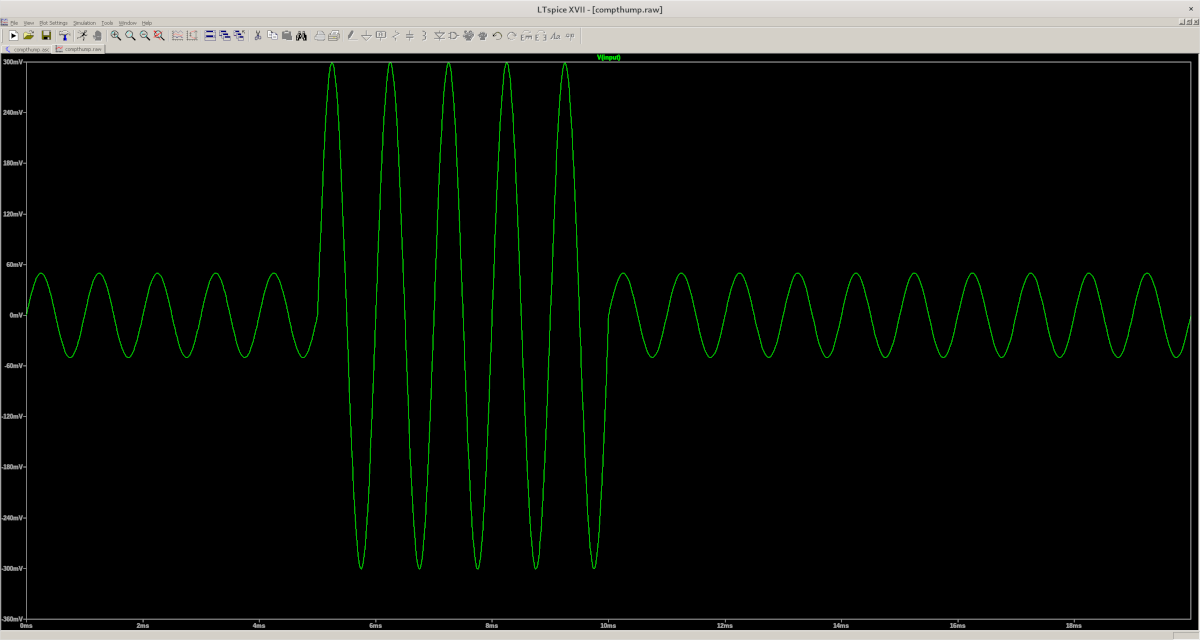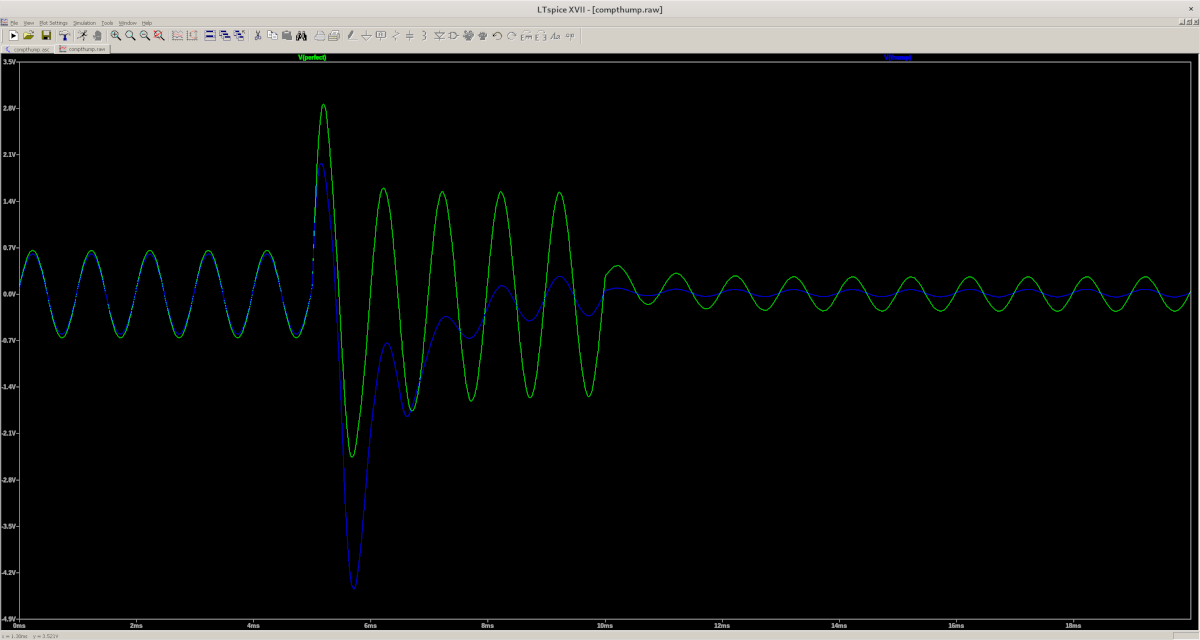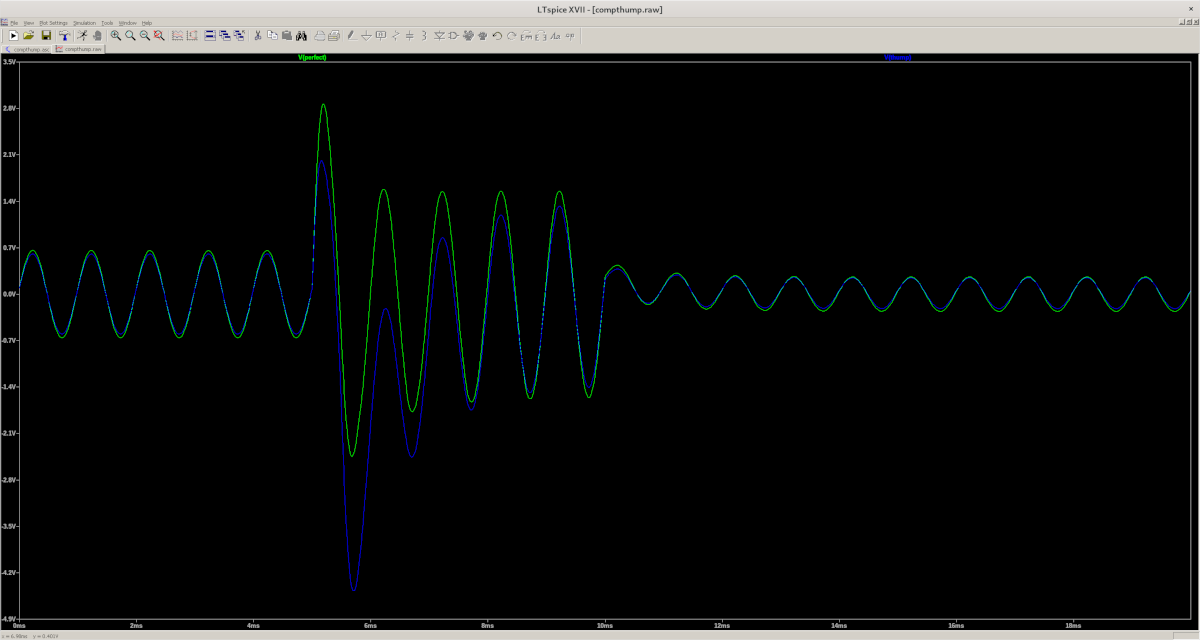abbey road d enfer said:
No. The cause of thump is a sudden displacement of the anode voltage when the gain cell is dubmitted to the Control Voltage. It has nothing to do with the signal frequency. Thump frequently appears on transients.
There are two phenomenons at work:
- The two tubes do not match precisely, which results in different voltage variations between them. So there are both a common-mode signal and a differential-mode signal. the CM signal should be rejected by the subsequent stages, but the differential signal is impossible to remove.
- The subsequent stages may not have enough CMRR to completely ignore the CM signal.
In Heikki's build, these subsequent stages have a very large CMRR, so teh only remaining source of thump is tube unbalance. It's dynamic unbalance, so static balance adjustment has a limited action.
Indeed lowering the attack speed rejects the thump spectrum towards infrasonics, but the usual challenge is to get a fast attack and minimum thump.
I love your condensed explanations, as always. The more often I read about this phenomenon, the more I learn, including the CMRR aspect.
I was looking at it from a test point of view. Feeding a series of sharp (squarewave), very low frequency impulses into a vari-mu set to shortest attack can be used to reveal tube imbalances -- it's artificially driving it into extreme territory, which makes thumping more pronounced / audible. Transients, yes. DC slip-through.
With my limited tube knowledge, the thought above was to avoid sharp transients to reduce thumping, which I think I understood to be most pronounced in the bass fq region. One approach is longer attack times, yes, which I just learned pushes the thump into subsonic land

-- however, this lets more bass in the audio signal pass through. The other approach is HP filtering, which too I think I understand makes the unit react less to high-amplitude bass - with less high energy transients in DC signal, ergo smoother, ergo less attenuation of bass in audio signal.
Both approaches do not eliminate thump -- they try to avoid it from happening. Thump can still and probably will happen when driven harder and/or with sharp transients (say a lound, high-pitched tabla hit e.g.). But hopefully the thump (1) is shorter and thus less noticeable, (2) is hopefully reduced enough to be masked by 'program material, and/or (3) it is looked at not as a fault, but a feature

.
Either way, both approaches yield overall less attenuation triggered by the 'problematic' bass fq region, I'd think -- so effectively, it's a vari-mu 'full-bandwith'
limiter not anymore but some kind of compressor.
Quick dirty (listening) test on PRR Vari-mu:
Driving the input pretty hard with a setting of
longest attack time and
no HP filtering sounds pretty close to a setting of
fastest attack and a
700 400 Hz HP filter feeding the sidechain.












![Soldering Iron Kit, 120W LED Digital Advanced Solder Iron Soldering Gun kit, 110V Welding Tools, Smart Temperature Control [356℉-932℉], Extra 5pcs Tips, Auto Sleep, Temp Calibration, Orange](https://m.media-amazon.com/images/I/51sFKu9SdeL._SL500_.jpg)























